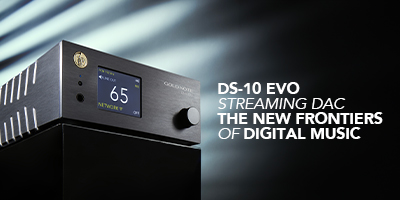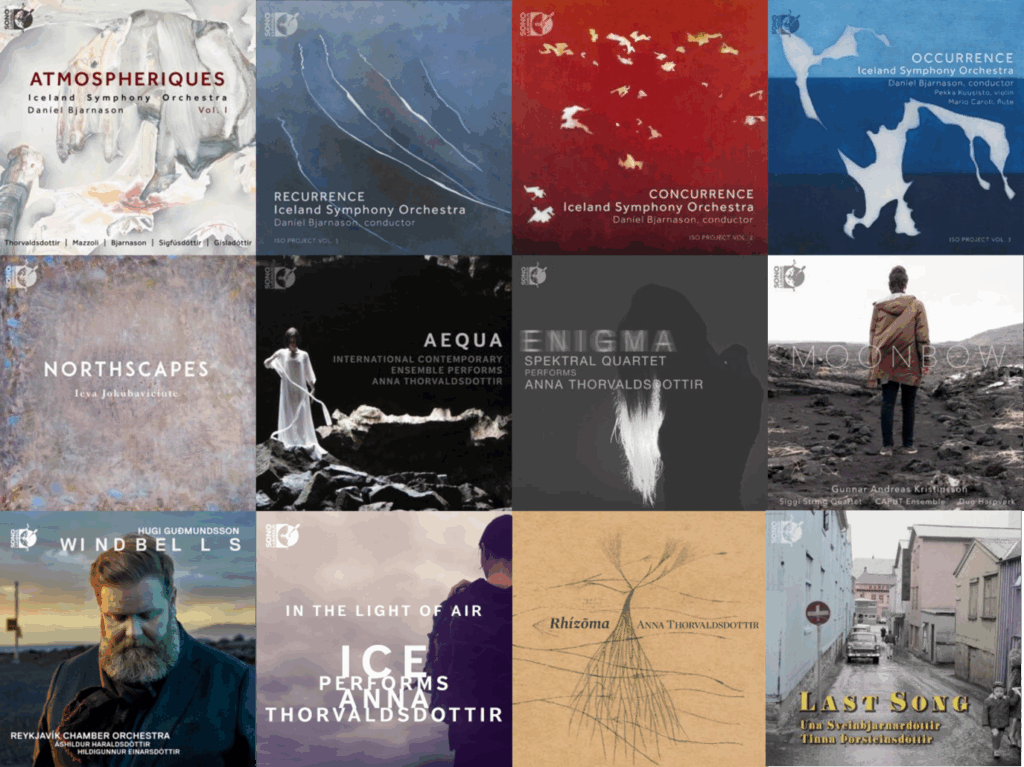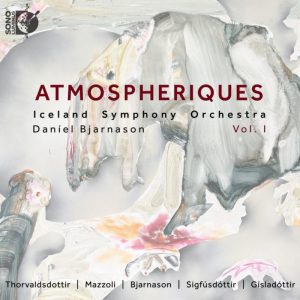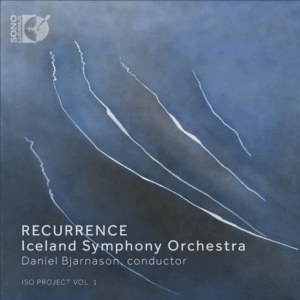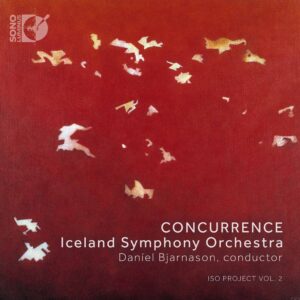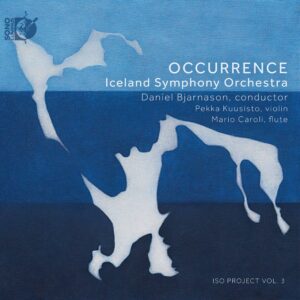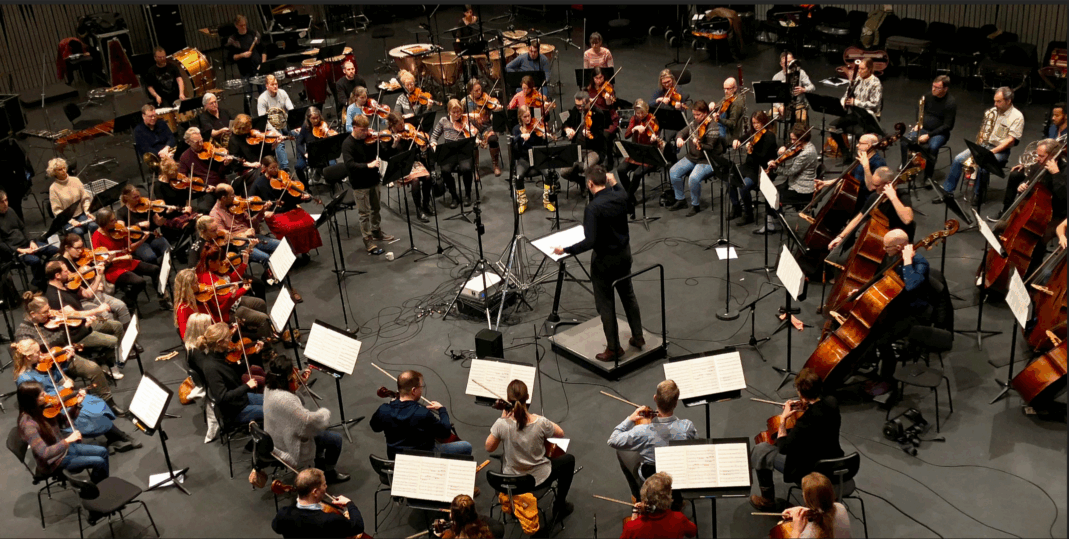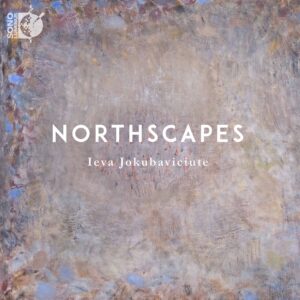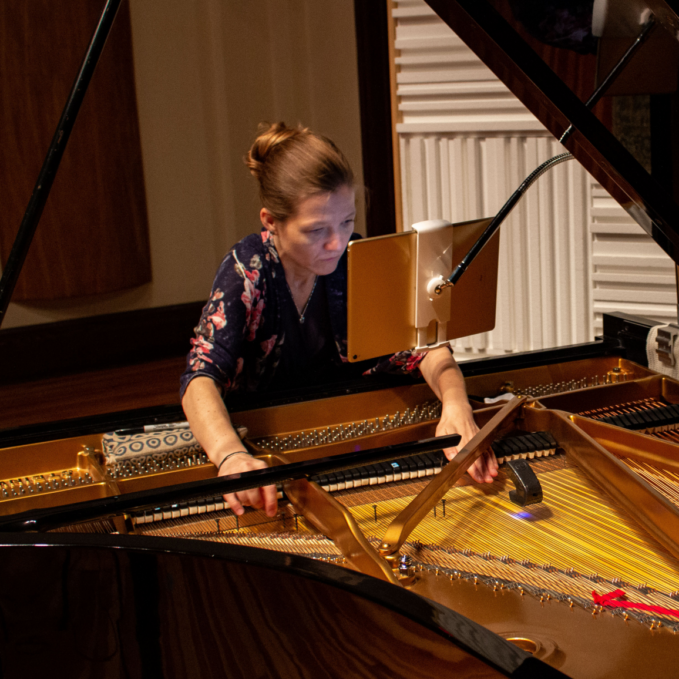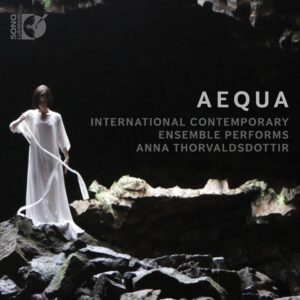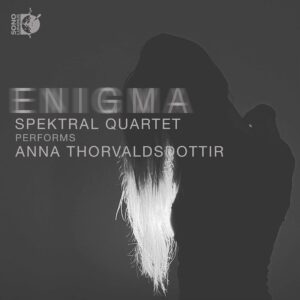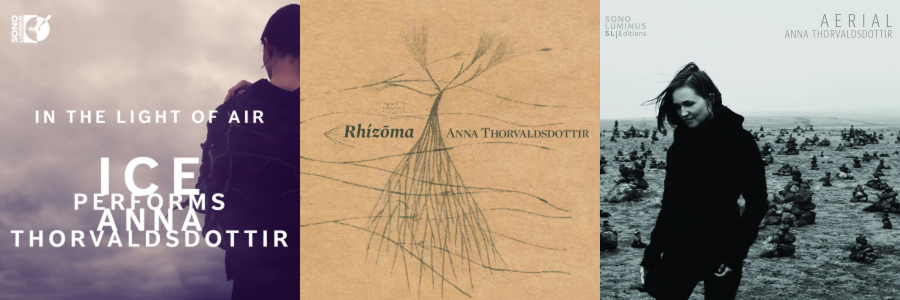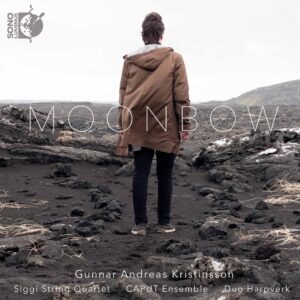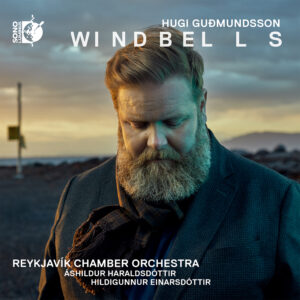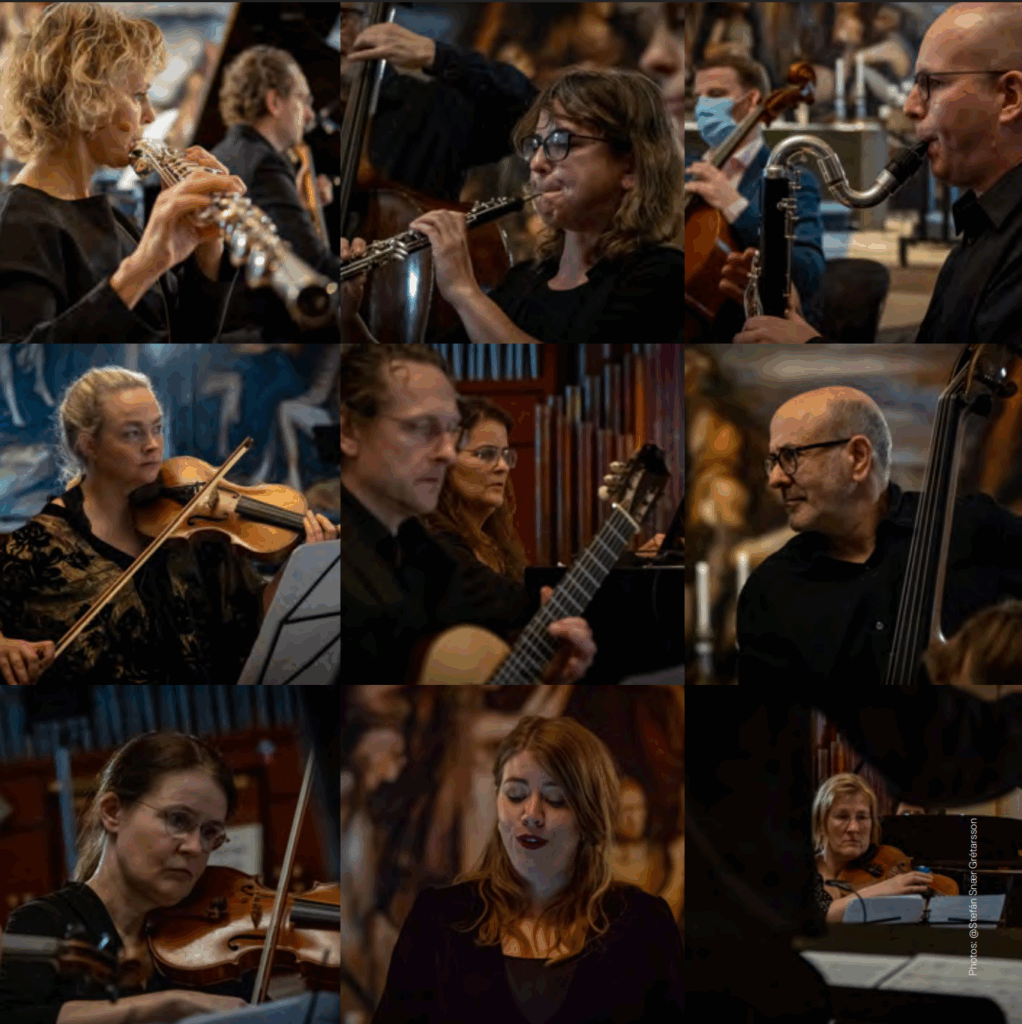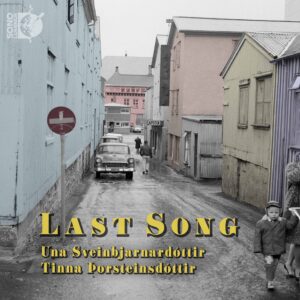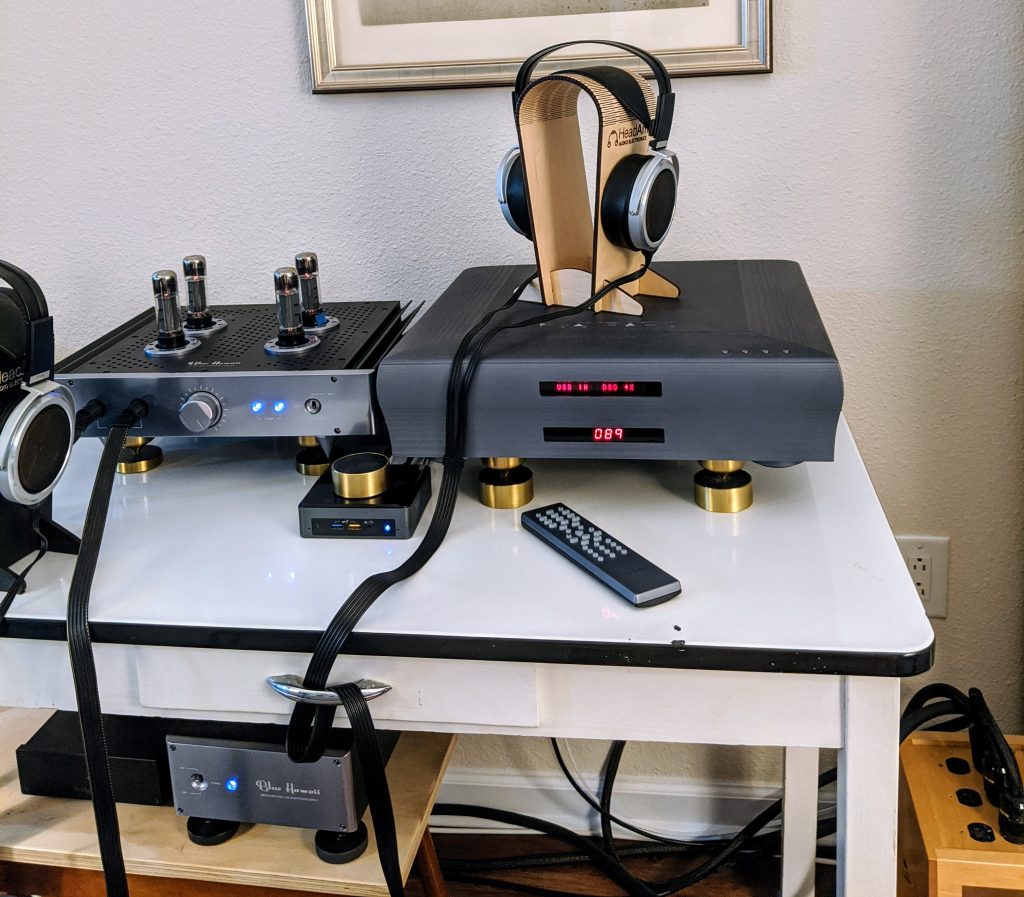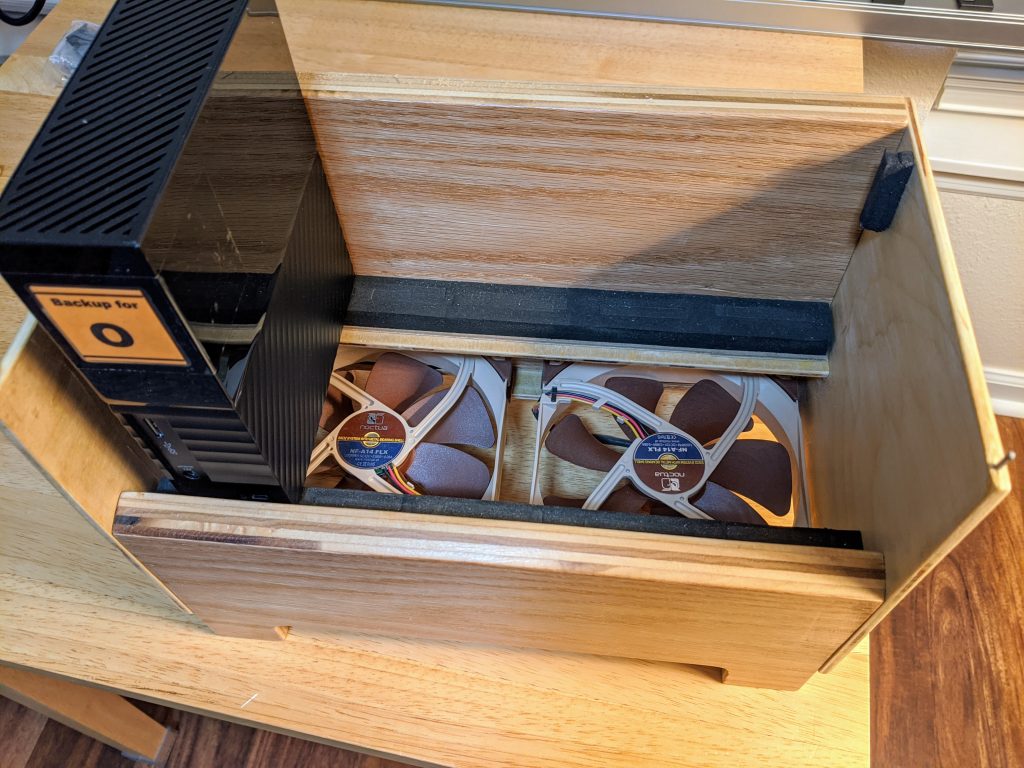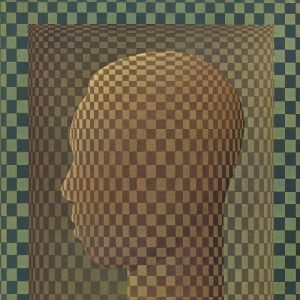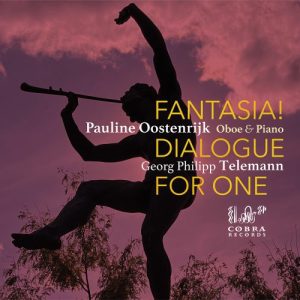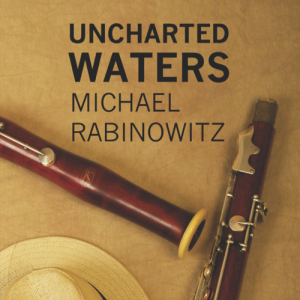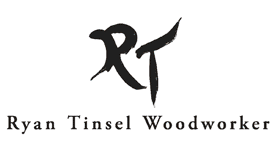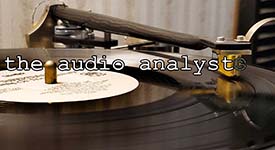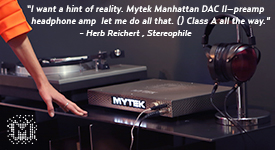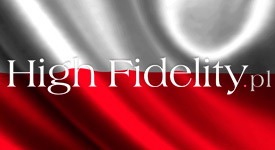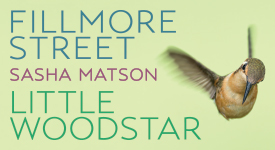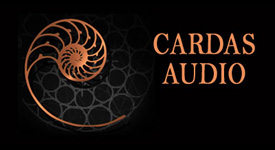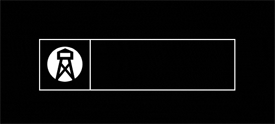For some time I've wanted to share with you some of this outstanding music, performance excellence, and superb audio quality coming from Sono Luminus' ventures with Icelandic composers and performers. Why Iceland? I didn't have any clear understanding other than that Sono Luminus CEO Collin Rae has some connections there and they got started with some recordings that have continued over many years now. The results of this relationship are phenomenal. You really need to hear these recordings!
Because I didn't have an understanding of the Iceland connection, I emailed Collin Rae to ask how this came about. Collin was gracious in responding: "This was a result of my relationship with composer Anna Thorvaldsdottir. We started working together from her first album, Rhízōma on Innova, when I was working at Naxos back in 2011. I was Innova's label manger for Naxos at the time and upon first hearing it I knew it was a very very special release. Anna introduced me to other people in the Icelandic music community, including the Iceland Symphony, and our work with Iceland composers and artists grew pretty organically from there. I do sense some pretty exciting new stuff will be coming in the next few years... There are some composers (like Anna) who we will work with as long as they want to work with us! We will release an orchestral album of Daniel Bjarnason's music in the fall, then record another orchestral album with the Iceland Symphony Orchestra in early 2026 for release in the fall of 2026."
So, on to the music...
If you listen to these albums, as I encourage you to do, there is something you may note about the orchestral works: while each composer is a unique voice, there is a common language at play in many of these compositions. Don't look for melodies. Instead, look for rhythms, textures, pacing, and choice of instruments. Be prepared for deep sonorous bass lines—think rumbling ice flows, perhaps. At least this is what often comes to my mind. And expect lots of elaborately constructed chords across multiple interweaving orchestral voices. It is a sound immersion experience, and occasionally a wild ride.
This is a distinctly different world of sound than one might be expecting based on other western modern music—unless you've listened to a fair amount of American composer Missy Mazzoli's classical works, in which case you may be right at home. (And, by the way, if you're not listening to Missy Mazzoli, you should be.)
But for now, we'll be focusing on Thorvaldsdottir, Sigfusdottir, Gisladottir, Bjarnasson, Vilmarsson, Jóhannsson, and other fellow Icelanders.
[album covers montage above]
Atmospheriques Vol. I, Iceland Symphony Orchestra, Daniel Bjarnason. Sono Luminus 2023 (DSD256, DXD) HERE
I am starting with this 2023 release of music from Icelander composers performed by the excellent national orchestra of Iceland, led by composer/conductor Daniel Bjarnason. It is tagged as Volume 1, and I look forward to Volume 2 which should be coming in the fall of 2026. The foil to the Icelanders is American composer Missy Mazzoli, but more on that below.
Each of the works on this album is as individual and unique as one can possibly imagine. While I hear a common language at play among these composers, there is no monolithic Icelander sound. Each composer is a unique voice. And this is why I'm starting with this album—to give you an overview of the diversity these composers bring to your ears and mind.
The album begins with Anna Thorvaldsdottir's gigantic Catamorphosis (2020), a 21-minute work of overwhelming intimidation and foreboding. It was co-commissioned by the Stiftung Berliner Philharmoniker, the New York Philharmonic, the City of Birmingham Symphony Orchestra, and the Iceland Symphony Orchestra, and first performed by the Berlin Philharmonic conducted by Kirill Petrenko in January 2021. The work is scored for a large orchestra consisting of two flutes, alto flute, two oboes, cor anglais, two clarinets, bass clarinet, two bassoons, contrabassoon, four horns, two trombones, bass trombone, tuba, bass tuba, four percussionists, harp, piano, and strings. Big orchestral power being pulled together!
And all that orchestra power is applied, not in crashing forte, but in deep, powerful, mournful, waves of sound. As is so often the case with Thorvaldsdottir, this work evokes cosmic indifference in these overwhelming chords of powerful sounds and deep undulating bass. Somewhat unusual for her, this new work evolves to introduce a delicate thread of hope at the end.
Anna Thorvaldsdottir (b. 1977) is one of the most innovative and distinctive composers of our current time. Her works are often obscure, somewhat chaotic, and ever disquieting. There is no ease in her writing, she will unsettle you. And, yet, she is endlessly fascinating, unerringly inventive, and often positively intimidating. She uses the full range and complexity of the modern orchestra, occasionally with prepared electronics (not in this work, however), to take the listener to places ever unexpected. As mentioned in the enclosed booklet, Anna's music "is composed as much by sounds and nuances as by harmonies and lyrical material. It is written as an ecosystem of sounds, where materials continuously grow in and out of each other."
Over coffee this morning, Ann tells me, "I listened to the Iceland recording you've been talking about all week. I am very impressed with the opening Anna Thorvaldsdottir work. The chords she uses just feel good—very deep in your spirit. For 21 minutes it's like being deep in the forests only this is probably deep on the ice. And, there are surprising touches of humor throughout. She is just very, very good. I will listen to it again soon." Of course, the album is Atmosperiques and the piece is Catamorphosis.
From this overwhelming opening track, the album moves to the geographic anomaly, American composer Missy Mazzoli (b. 1980) and her Sinfonia (for Orbiting Spheres) (2014, rev. 2016). But while there is a geographic dislocation here, Mazzoli's sensibilities are completely synergistic with the musical language of her Icelandic colleagues—with an edge. Commissioned by the Los Angeles Philharmonic, this is a work that, in Mazzoli's words "is music in the shape of a solar system, a collection of rococo loops that twist around each other within a larger orbit. The word “sinfonia” refers to baroque works for chamber orchestra but also to the old Italian term for a hurdy-gurdy, a medieval stringed instrument with constant, wheezing drones that are cranked out under melodies played on an attached keyboard. It's a piece that churns and roils, that inches close to the listener only to leap away at breakneck speed, in the process transforming the ensemble turns into a makeshift hurdy-gurdy, flung recklessly into space." There is a pre-recorded track, provided with the score and parts, that is played at the very end of the piece. In performance, this track is triggered by the percussionist and is played through speakers near the percussion section so that the sound seems as if it is emanating from the percussionist's location onstage. And such is the effect captured in this recording. Overall, the music is unsettling, other-worldly, unpredictable—and it is fantastic!
Chosen by Ricardo Muti as Mead Composer-in-Residence with the Chicago Symphony (2018-2021), Mazzoli was named "2022 Composer of the Year" by Musical America. If you are not listening to more of her works, you are missing out on a great voice in modern music.
From Mazzoli's ending, the album seamlessly transitions into the opening of conductor Daníel Bjarnasson's (b. 1979) work, From Space I Saw Earth (2019). I am struck by how seamlessly this transition occurs and yet how very different the music is as it evolves from its quiet introduction. Commissioned by the Los Angeles Philharmonic Orchestra, who premiered it in 2019, the piece expands, growls, groans and grows into an overwhelming statement of cosmic push and pull, expansion and contraction. Written to be performed by an orchestra separated into three groups, each with its own conductor, the work is intentionally always slightly out of sync with its parts. Each conductor has a personal score for his/her section of the orchestra, plus a reduced copy of all the other two scores. The conductors direct at their own tempi which are almost, but never quite, together. Bjarnasson says, "This creates a constant phasing effect; one that is quite organic and not strictly controlled... Occasionally the conductors come together for a few bars and the orchestras play as a single organism; the three parallel timelines temporarily aligning." The resulting experience for the listener is one of constant sonic motion. Never quite whole, always evolving. A fascinating musical experience—you really must hear it.
This YouTube release of Bjarnasson's From Space I Saw Earth will give you a taste of it. But to fully experience it, you really need to listen to the high resolution download:
María Huld Markan Sigfúsdóttir (b. 1980) is a composer and a violinist. you will see her work Oceans (2018) listed in the album Concurrence, below. In this album, we have her 2020 composition, Clockworking for Orchestra. In Clockworking, an old work song serves as the basis for hypnotic music, exploring the relationship of humans and machines. Originally scored for violin, viola, cello, and electronics, this performance features the composition in its orchestral version.
Bara Gisladottir (b. 1989) concludes the album with her ethereal ÓS, commissioned by the City of Reykjavík and the Iceland Symphony Orchestra in 2018 in the occasion of Iceland's centenary of sovereignty. ÓS can mean "estuary" or "mouth," and Gisladottir plays with the multiple meanings through the work. The included booklet playfully wonders whether the work is gasping in air, or desperately exhaling? At just 6:14 minutes, ÓS is an intriguing conclusion to what has been a delightfully intense, sometimes intimidating and overwhelming hour of music that wanders a bit on the wild side of nature.
Conductor Bjarnason and the Iceland Symphony Orchestra deliver masterful performances throughout this album. The orchestra's technical mastery is impressive, as is their ensemble and ability to respond to extreme shifts in loudness, from barely there to overwhelmingly massive. I am most impressed.
The recording is what I would expect of Dan Shores, Sono Luminus' outstanding recording and mastering engineer. Imaging is precise and rock solid, inner detail is superb, and the capture of dynamic extremes is most exceptional. If you are looking for an album that will fully exercise your audio system and demonstrate just how well you have everything tuned, this album can do that for you. If you have the ability to play deep, thunderous bass with precise leading edge transients and texture definition, this album will also do that for you. If you are looking for a recording to fully immerse yourself into for nearly an hour, again, this album will do that. From the perspective of an audiophile looking purely for a highly capable sonic experience, this is an album to cherish—you can put it right at the top of your "demonstration to friends" list.
But, importantly, if you want to hear some of the most innovative modern music being composed today, all supremely well performed, this album is one that I cannot more highly recommend.
ISO Project Vol. 1: Recurrence, Iceland Symphony Orchestra, Daniel Bjarnason. Sono Luminus 2017 (DXD, DSD256) HERE or as a set of all three volumes HERE
ISO Project Vol. 2: Concurrence, Iceland Symphony Orchestra, Daniel Bjarnason. Sono Luminus 2019 (DXD, DSD256) HERE or as a set of all three volumes HERE
ISO Project Vol. 3: Occurrence, Iceland Symphony Orchestra, Daniel Bjarnason. Sono Luminus 2020 (DXD, DSD256) HERE or as a set of all three volumes HERE
This three-volume cycle by the 70-year-old Iceland Symphony Orchestra, conducted by Daniel Bjarnason, is remarkable. The music is monumental, majestic, thoroughly engrossing. Contained in this cycle are works by nine contemporary Icelandic composers, all of whom compose in a very similar musical language but each with a distinct voice. This is an important survey of modern music.
The first volume, Recurrence is orchestral-only. Volumes 2 and 3, Concurrence and Occurrence, include two works each highlighting a selected instrumental soloist with the orchestra. The works with instrumental soloists include Daníel Bjarnason's powerful Violin Concerto (2017) with the outstanding Norwegian violinist Pekka Kuusisto, Thuridur Jónsdóttir's Flutter (2008) with Italian flutist Mario Caroli, Haukur Tómasson's percussively violent Piano Concerto No. 2 (2016) with pianist Víkingur Ólafsson, for whom the work was composed and dedicated, and Páll Ragnar Pálsson's thunderous Quake (2016) with the excellent cellist Sæunn Thorsteinsdóttir.
I guarantee you than none of these instrumental accompanist works will sound like your traditional concerto piece. And, all are challenging, innovative compositions well worth hearing, and then hearing again. I am enchanted by each of them.
All of the works in this cycle of recordings are powerful, sui generis compositions. The are magisterial in scope and impact. They are each a unique journey into a remarkable sonic landscape. Are some more interesting, more innovative, more conspicuously complex, than others? Oh yes, to be sure. Will I step through each work and give you a synopsis of what I hear? Oh, definitely not.
My encouragement to you is find these albums and listen to them. Listen to each album in its entirety. Do so in a silent, dark room where you will not be distracted. If you have any affinity whatsoever to powerful modern compositions, you will be greatly rewarded by your listening. If your system supports deep bass response, great dynamic range, and excellent transient response, you are in for a large orchestra sonic extravaganza. If, like me, you listen to headphones, you will be consumed by enjoyment of instruments captured with superb detail, timbral excellence, and dynamic contrasts. The leading edge transients captured by recording engineer Dan Shores are simply exceptional.
As Steve Smith, who writes about music for The New Yorker, says: "The series has been a milestone project. One that any conscientious collector of symphonic music simply must have."
Yes!
For a sample of the music on these three albums, consider listening to this YouTube release from Volume 2 of Anna Thorvalsdottir's Metacosmos:
Sono Luminus recording and mastering engineer Daniel Shore has done an amazing job with these recordings. He recorded these performances for a full immersion experience (see recording session photo below), and he recording in DXD. Unfortunately, as far as I can tell, there is no downloadable surround release available of these recordings—NativeDSD only has the stereo release. But, one can purchase directly from Sono Luminus the Blu-ray surround sound disc with less-than-DXD resolution but with the various now common surround configurations (HERE). As I mentioned, I listened over headphones to the DXD stereo release and am simply blown away. I'd love to hear a full surround DXD playback of these recordings on a system set up to handle that (but that is just wishful—still, it would be phenomenal).
Recording session for the ISO Project, Iceland Symphony Orchestra, Daníel Bjarnason conducting.
Northscapes, Ieva Jokubaviciute. Sono Luminus 2021 (DSD256, DXD) HERE
Lithuanian pianist Ieva Jokubaviciute delivers powerful, intricately crafted performances of works composed during the first decades of the twenty-first century by composers from the Nordic and Baltic countries of Europe: Lithuania, Latvia, Finland, Norway, Iceland and Denmark. Anna Thorvaldsdottir's powerful composition, Scape (2011), is our tie to Iceland.
What all of these works share is a particular attunement to nature, reverberating out of the ever-present reservoir of pagan myths, legends, and folk music of the region.
The album opens with Norwegian composer Lasse Thoresen's ethereal Invocation of Pristine Light (2014)
It then moves from this lightness to the deep dark spaces of Icelander composer Anna Thorvaldsdottir's Scape (2011) with it's demands of both keyboard technical excellence balanced against strikes, plucks and strums of the piano's strings behind the hammers. The score calls for the piano to be prepared with screws placed between certain strings, for the use of a thimble, and for the application of an EBow (a small, handheld device that works by emitting a magnetic pulse which interacts with the string and pickups to create soaring, sustaining notes and synth like tones). I am once again struck by Thorvaldsdottir's creativity, her alternative viewpoint, and her rolling thunder. Her music is consistently innovative and engaging—count me a huge fan.
Other works include the delightful Fantasia for Solo Piano (1997) by Lithuanian composer Raminta Šerkšnytė, Finnish composer Kaija Saariaho's Prelude for Solo Piano (2007), Latvian composer Pēteris Vasks' Music for a Summer Evening (2009), and four selections from among the Twelve Nocturnes (2000-2014) by Danish composer Bent Sorensen. The album concludes by returning to Lasse Thorensen for a second Invocation, the Invocation of Rising Air (2014).
The combination of these works paints a surprisingly holistic view of music rooted in the earth but challenging one to find meaning beyond one's immediate senses. It is strong, grounded music that demands you attention, commands your respect. Such an impressive collection of works that cohere into a beautiful 55 minutes of reflection.
Recorded in Sono Luminus' studio in Boyce, Virginia, by Daniel Shores, the sound quality is impressive—as I've come to expect of any of his recordings.
Ieva Jokubaviciute in recording session at Sono Luminus' studio in Boyce, Virginia
AEQUA - International Contemporary Ensemble Performs Anna Thorvalsdottir. Sono Luminus 2018 (DXD) HERE
AEQUA is a collection of works for smaller forces by Icelander composer Anna Thorvaldsdottir, performed by the excellent International Contemporary Ensemble. The large central work, the 12:22 minute Aequilibria for 12 performers, is preceded and followed by shorter works for smaller collections of instruments, with the opening work a solo piano piece. All of these works journey through Thorvaldsdottir's soundworld, a world where sounds, chords, counterpoints dominate instead of traditional harmonic and lyrical expressions.
As with her orchestral music, Thorvaldsdottir makes use of unusual sounds, deep chords of bass notes that sweep across the soundstage as they move from instrument to instrument, interweaving whispers of gossamer that thread the inner spaces, crashing waves from percussion and the deep wind instruments, all to create a world that is uniquely her own. Hers is an earthy primal world indifferent to humanity, and occasionally a cosmos that intimidates and overwhelms.
Look not here for sweetness and comfort. But linger here for a musical experience like few others. See my discussion of the album Atmospheriques above for more information about Anna Thorvaldsdottir (b. 1977). As noted there, she is one of the most innovative and distinctive composers of our current time.
If you are willing to be challenged, you should listen to this album. It is a tour de force of modern music-making with excellent performers and extraordinarily good sonics. Dan Shores has done a superb job with this recording.
About her music in this album, Thorvaldsdottir writes, "Internally, I hear sounds and nuances as musical melodies and in my music I weave various textures of sounds together with harmonies and pitched lyrical material. The music is written as an ecosystem of sounds and materials that are carried from one performer—or performers—to the next throughout the progress of a work. As a performer plays a phrase, harmony, texture or a lyrical line it is being delivered to another performer as it transforms and develops, passed on to be carried through until it is passed on again to yet another...the works breathe in and out of focus, expand and contract within their individual characters but reflect on each other through their various internal connections from beginning to end."
The International Contemporary Ensemble (ICE) say of themselves, "The International Contemporary Ensemble, anchored in Downtown Brooklyn, is a multidisciplinary collective of musicians, digital media artists, producers, and educators committed to creating and fostering collaborative environments that inspire audiences to rethink how they experience contemporary music and sound. For over two decades, the Ensemble has shaped the landscape of New Music by commissioning, developing, and performing works by living artists. The Ensemble has had a major impact on the contemporary performance ecosystem in New York City, nationally, and internationally."—I say, they are very, very good. With technical excellence, great ensemble, and deep commitment, they make this recording soar.
Enigma, Spektral Quartet Performs Anna Thorvaldsdottir. Sono Luminus 2021 (DXD) HERE
The result of a three-year collaboration of Anna Thorvaldsdottie and Spektral Quartet, Enigma is simultaneously colossal and introspective, moving between heart-wrenching chord progressions and the scrapes and clicks of extended string techniques. A piece of profound emotional magnitude, Enigma provokes considerations of our relationship to the vast cosmos that surrounds us—and the infinite universe within.
So say the liner notes, and I cannot think of a better way to describe or introduce this album. What I will say is this: get this album, find a very quiet time at night, turn off the lights, put out the do-no-disturb sign, turn the volume up, immerse yourself. You will be rewarded.
How the quartet generates so many different sounds from four string instruments, I do not know. That unto itself is remarkable. To that, add Thorvaldsdottir's conception of her sound world, with notes stretched, scratched, wailed, clicked, and murmured you have a extraordinary musical experience to enjoy. Yes, the album it is just 28:28 in length, three movements of a single work. But well worth acquiring for the experience this delivers, in my opinion.
As I've suggested elsewhere, there is nothing conventional about the music of Anna Thorvaldsdottir. Other albums from Sono Luminus comprised entirely of Thorvalsdsdottir's music that I recommend to you include:
And in combination with works by other composers:
Moonbow (Music of Gunnar Andreas Kristinsson), Caput Ensemble, Duo Harpverk, Siggi String Quartet. Sono Luminous 2021 (DXD, DSD256) HERE
And now for something a bit different... The music of Icelander Gunnar Andreas Kristinsson (b. 1976) follows a bit different path than what we've heard on other albums. First, this is music for solo instruments and small ensemble. Second, we don't have waves of sound in great chords as so much with other composers. Instead, Kristinsson's music works with musical element drawn in and out of the foreground through instrumentation and articulation. His is an unfolding process—passages that transform smoothly from one texture to another, shifting between contrasting moods. It is strictly constructed, multi-layered, yet continuous. And distinctive. Still, we are not in the land of melody and lyrical composition. This music continues with the underlying musical language of Iceland, leavened perhaps by his years spent marinating in the Netherlands and his MA from the Royal Conservatory in The Hague. Influences do show up.
The album includes music across multiple aspects of Kristinsson's diverse portfolio, with instrumentation equally broad ranging, featuring works for harp, percussion and bass clarinet, for a string quartet, and for larger ensemble including violin, xylophone, marimba, and bass clarinet, and a piece for a small orchestra of 14 instruments. The works are diverse, not only in terms of instrumentation, but also in terms of the musical theme and give a good insight into Gunnar's unmistakable and personal world of sound. Intriguing and worth exploring.
Windbells (Music of Hugi Guðmundsson), Asbjørn Ibsen Bruun, Hildigunnur Einarsdóttir, Reykjavík Chamber Orchestra. Sono Luminus 2022 (DXD, DSD256) HERE
And in the music of music of Hugi Guðmundsson (b. 1977) one can almost find a melody hidden here and there. I jest, of course. But his music does present a shift from much of what has gone before in this article. Yes, it is still very contemporary. He even uses electronics in some pieces (Equilibrium IV: Windbells and Brot). But, Guðmundsson is a composer's composer. He writes music with pitch, intonation, instrumental interplay. One might even be able to read the notation in his manuscripts, if one read music. His is perhaps the most Western European contemporary classical of the lot.
The album opens with his work Entropy for flute, clarinet, cello, and piano. The impetus for the composition is the concept of time and transitions from order to chaos, and vice versa. The second movement is, fittingly, a "Hommage à Olivier Messiaen."
The title work, Equilibrium IV: Windbells, was the seed from which the album grew, according to Guðmundsson. He goes on to say that this is the oldest composition, containing within it "the contrasts of Crumb, the meditativeness of Messiaen, and the atmospheric dramaturgy of my uncle and great musical influence Hafliði Hallgrímsson." It is an fascinating piece, with the interactive electronic elements woven in subtly among the sounds of bass flute, bass clarinet, cello, guitar, and piano. The soundscape as a whole is complex, interwoven, intriguing. Well worth an investment of time and attention.
Brot ('Fragments') opens with a clarinet solo that had me dreaming Gershwin before it quickly shifted into something other entirely. With more overt use of electronics, the sounds of wind and otherworldly apparitions develop. It is a progression and regression in time. Guðmundsson says "The electronics in the intermezzos are therefore mostly a recording of the previous movement, played in reverse. This sort of time travel is obviously very dangerous and can bring you to unexpected places, as it does in the last movement of the piece." Fascinating to follow as the final movement 'Danse Macabre' takes over.
The final work, Songs from Hávamál II uses verses from Hávamál ('Words of the High One'), an old Icelandic poem which is preserved in a 13th-century manuscript. Attributed to the Nordic god Odin, the poem imparts wisdom and good advice on life and proper conduct. The words are sung to great effect, with emotional intensity and inflection, by Icelandic mezzo-soprano Hildigunnur Einarsdóttir. The text is included in the enclosed booklet, but are completely unnecessary to enjoying this work.
When I first started to listen to this album, I was unsure what my reaction would be. But it was a very pleasant surprise—the music and performances kept me thoroughly engaged throughout it's one hour presentation. I can't offer much higher praise for an album of music by a single composer than this. Recommended!
Performers in Windbells. Just check out that bass flute in the upper left panel.
Last Song, Una Sveinbjarnardóttir and Tinna Thorsteinsdóttir. Sono Luminus 2021 (DXD, DSD256) HERE
Okay, I hear the chorus. Give us a break from all this classical music, give us something different to chew on. Well, here it is, at least in part. This is an eclectic album performed on violin, piano (plus prepared piano and toy piano).
Says violinist and composer Una Sveinbjarnardóttir, the album is inspired by the moment before the realization of something that drastically changes your life, the moment of just being, existing in the moment. The title also refers to a daily tradition on Icelandic radio Rás 1, where a song, "last song before the news" would be played just before the news hour at noon. The song would typically be an Icelandic one, sometimes a lullaby, a love song, or an ode to scary and gorgeous nature. Or an Icelandic traditional, sometimes an Italian canzone or a Scandinavian sorrow.
Varied and delightfully enjoyable. Take it with you.
A final note about all of these albums
I've been listening to these albums at various times over the past 6 years since my transition to an all-digital playback system as a result of downsizing. I've kept coming back to them over and over again. I find them so unique, yet varied. The musical language is distinctive. You may not enjoy the music. But Ann and I certainly do. And we encourage you to explore some of it. Perhaps it will expand your horizons. Perhaps (hopefully) you will find it as enjoyable, challenging, and compelling as do we.
All of these albums are recorded by Sono Luminus recording and mastering engineer Dan Shores. He has done an amazing job of creating superlative audio experiences. I'm sure Dan would enjoy you seeking out the various surround-sound versions of these albums available on Blu-ray disc directly from Sono Luminus. Regrettably for the surround lovers among you, those multi-channel varieties are not available as downloadable files from any source I've seen. NativeDSD carries only the stereo iterations, but I'm sure they would welcome the ability to provide the multi-channel iterations as downloads should Sono Luminus decide to make them available.
If you decide to explore a bit, let me know what you think of some of the music surveyed here.

